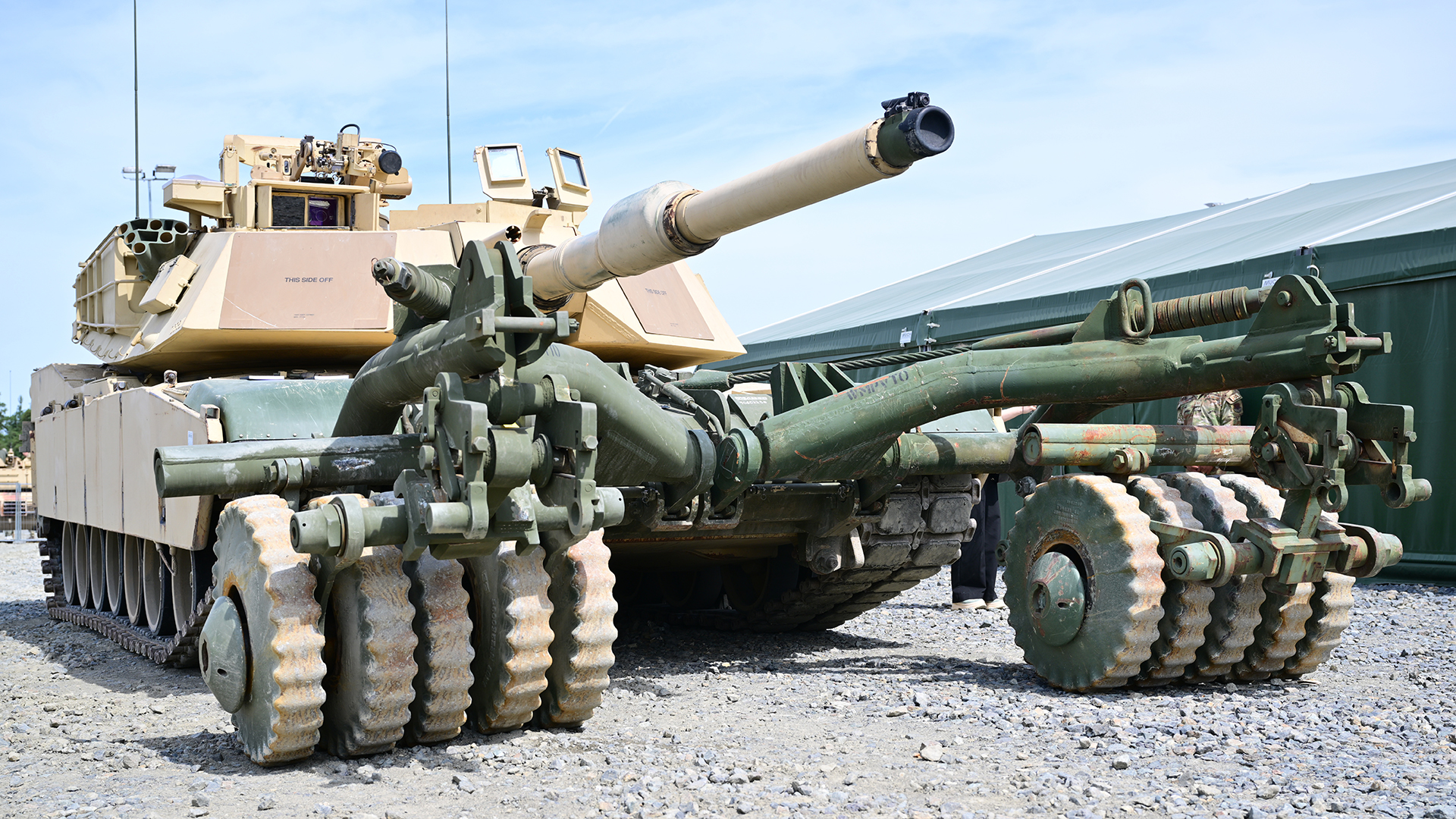

Ukrainian President Volodymyr Zelensky announced on Monday that his country had received the first of 31 M1 Abrams tanks, which will reinforce Ukrainian brigades.
“I am grateful to our allies for fulfilling the agreements!” Zelensky posted on X, the social media platform formerly known as Twitter. “We are looking for new contracts and expanding the geography of supply.”
Army Maj. Charlie Dietz, a Pentagon spokesman, confirmed that the first batch of 31 M1 Abrams tanks has arrived in Ukraine, but he declined to specify how many.
“The mere presence of Abrams tanks serves as a potent deterrent. By having these tanks in their arsenal, the Ukrainian army can more effectively discourage aggressive actions,” Dietz said on Monday.
U.S. military assistance to Ukraine has expanded over the past 18 months from Javelin and Stinger missiles to American-made main battle tanks, and Ukrainian pilots will soon begin flight training on F-16s.
The United States will continue to provide the Ukrainians with the support they need to succeed on the battlefield, Dietz said.
Subscribe to Task & Purpose Today. Get the latest military news and culture in your inbox daily.
The M1 Abrams tanks will help Ukrainian forces exploit openings in Russian defensive lines, the head of Ukraine’s Defense Intelligence Directorate Lt. Gen. Kyrylo Budanov said in a recent interview with The War Zone.
“They should be used in a very tailored way for very specific, well-crafted operations because if they are used at the front line and just in a combined arms fight, they will not live very long on the battlefield,” Budanov said. “They need to be used in those breakthrough operations, but very well-prepared.”

Ukraine is starting to receive the M1 Abrams tanks just as its forces may have finally breached Russia’s well-prepared defenses in the southeastern Zaporizhia region of the country following its monthslong counteroffensive.
The Russians laid thousands of mines and tank traps and dug networks of trenches ahead of the counteroffensive, all of which slowed Ukraine’s progress. But a Ukrainian military commander recently said that his country’s forces may have finally broken through Russia’s “Surovikin line” near the village of Verbove.
The Institute for the Study of War think tank in Washington, D.C. has confirmed that Ukrainian military units are fighting north of Verbove. But ISW has also concluded that it is too early to predict if Ukrainian forces can turn their gains in the sector into an operational breakthrough.
Ukraine’s ability to break through Russia’s defenses in the Zaporizhia region will depend on whether Ukrainian forces can field enough combat power to continue to keep pushing forward; if Russia has enough reserve forces to hold that sector of the front; and how heavily mined and prepared Russia’s defenses beyond the Surovikin line are, the think tank wrote in its Sept. 24 assessment of the conflict.
The United States initially refused to provide Ukraine with M1 Abrams tanks, claiming it would be too difficult for the Ukrainians to maintain the tanks. But over time President Joe Biden’s administration has dropped its opposition to giving Ukrainians several advanced weapons systems, including the Army Tactical Missile System, which have a range of up to 186 miles and could help Ukraine eventually sink Russia’s Black Sea Fleet.
The U.S. also initially balked at Ukraine’s requests for advanced Western aircraft, but now Ukrainian pilots are expected to start flight training on F-16s this fall with the Arizona Air National Guard’s 162nd Wing.

The F-16s themselves are being provided by other countries, including Denmark and the Netherlands.
Flight training could take anywhere from three to nine months, depending on their experience with fighter aircraft, Air Force Lt. Gen. Michael Loh, Air National Guard director, told reporters on Sept. 16.
The length of time it will take to train the Ukrainian pilots to fly F-16s will vary based on three major factors: How proficient they are with aircraft; if they have any combat experience; and how well they speak English, said retired Air Force Gen. Philip Breedlove, who served as head of U.S. European Command and Supreme Allied Commander Europe of NATO Allied Command Operations from 2013 to 2016.
Another factor that will affect how much training the Ukrainian pilots need is whether they have recent flight experience, Breedlove told Task & Purpose recently. If they last flew several years ago, they need to brush up on their flying skills, and that will add time to the training pipeline.
Even when they complete flight training in the United States, the Ukrainian pilots will need additional training after joining their units for the specific missions that they will fly, including combat air patrols, night precision strikes, and suppression of enemy air defenses, Breedlove said.
Breedlove stressed that there is no “magic length of time” that it takes to turn an inexperienced pilot into a fighter ace.
“You don’t just wave a wand and the guy’s got 10 years of experience,” Breedlove said. “You earn experience in the mission set in the aircraft.
The latest on Task & Purpose
- 101st and 82nd Airborne Division soldiers deploying to Eastern Europe
- Have you seen me? All the best ‘Missing F-35’ memes
- Marine Corps searching for F-35 after pilot ejects in South Carolina
- Senate bypasses Tuberville on Joint Chief nominations for Brown, George
- Search for missing Marine F-35B finds debris field